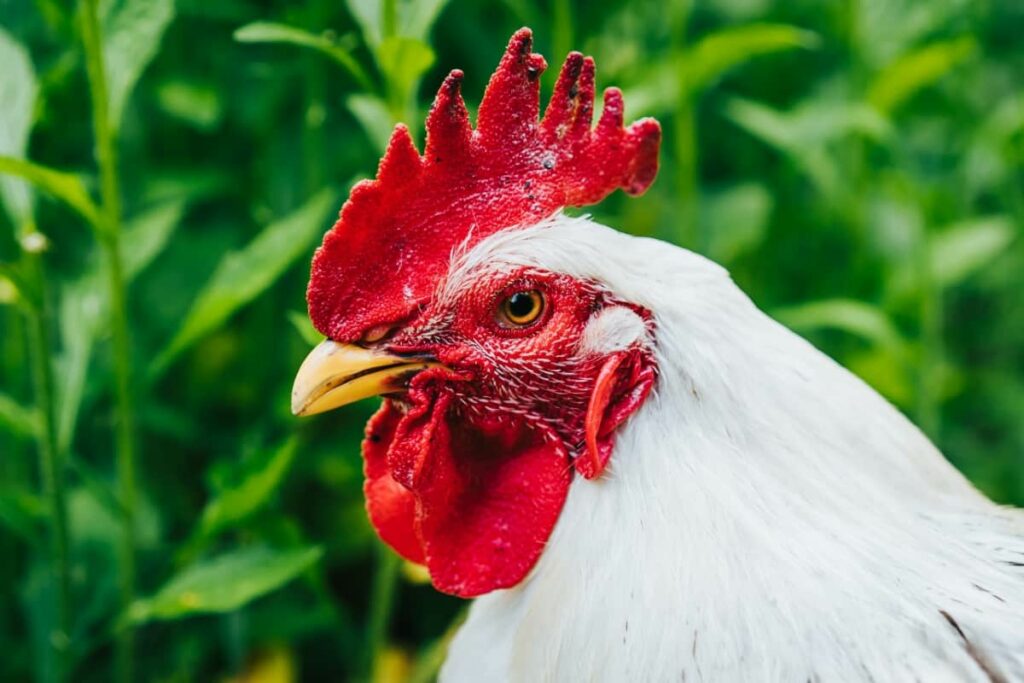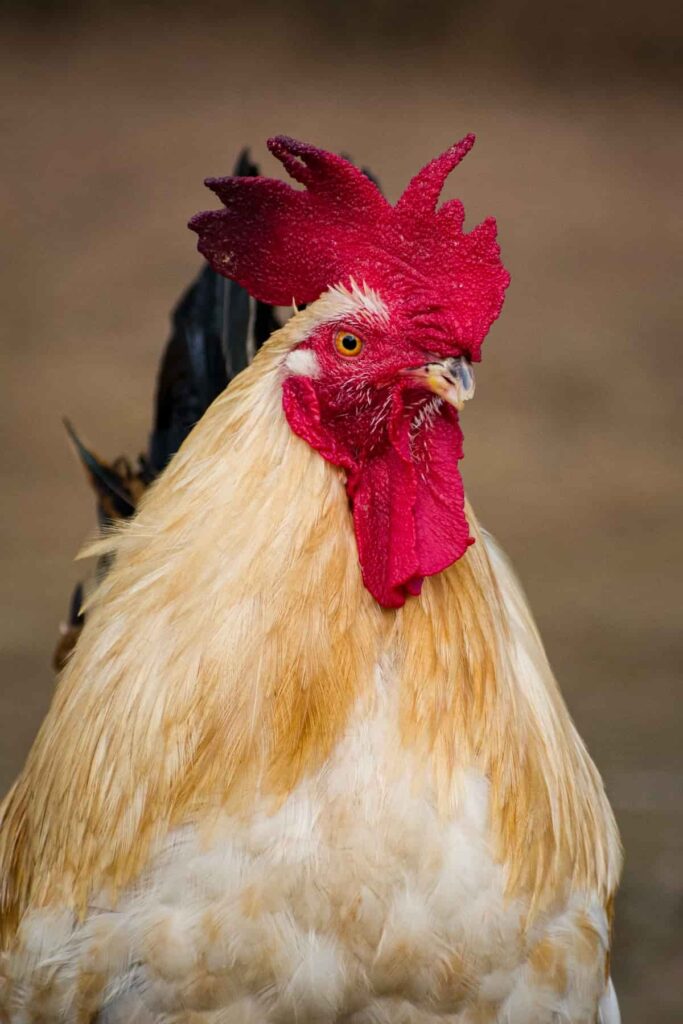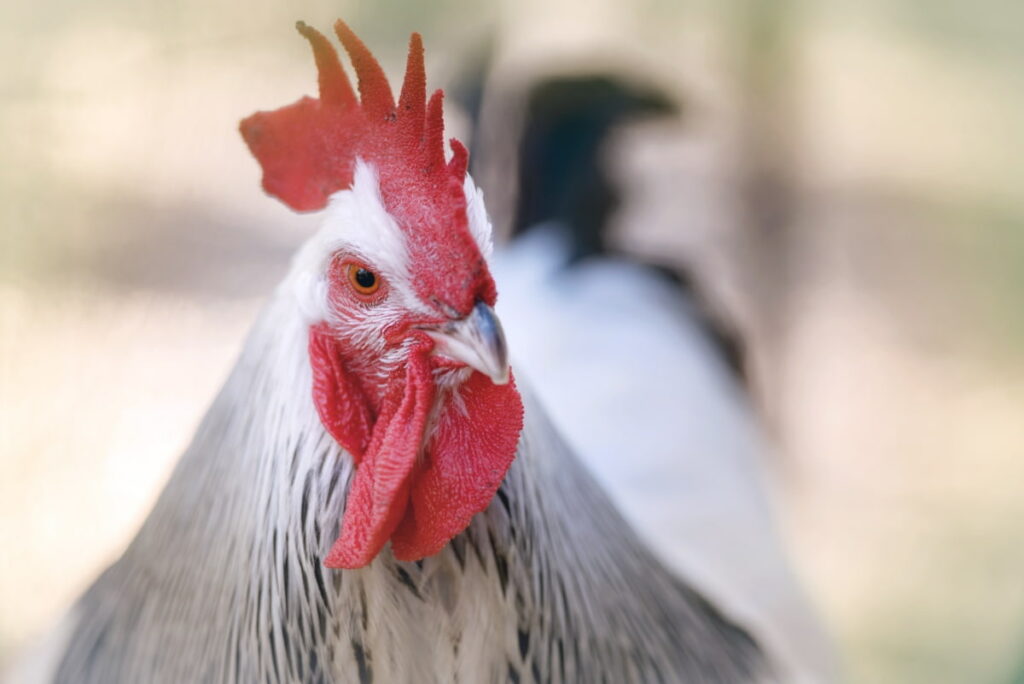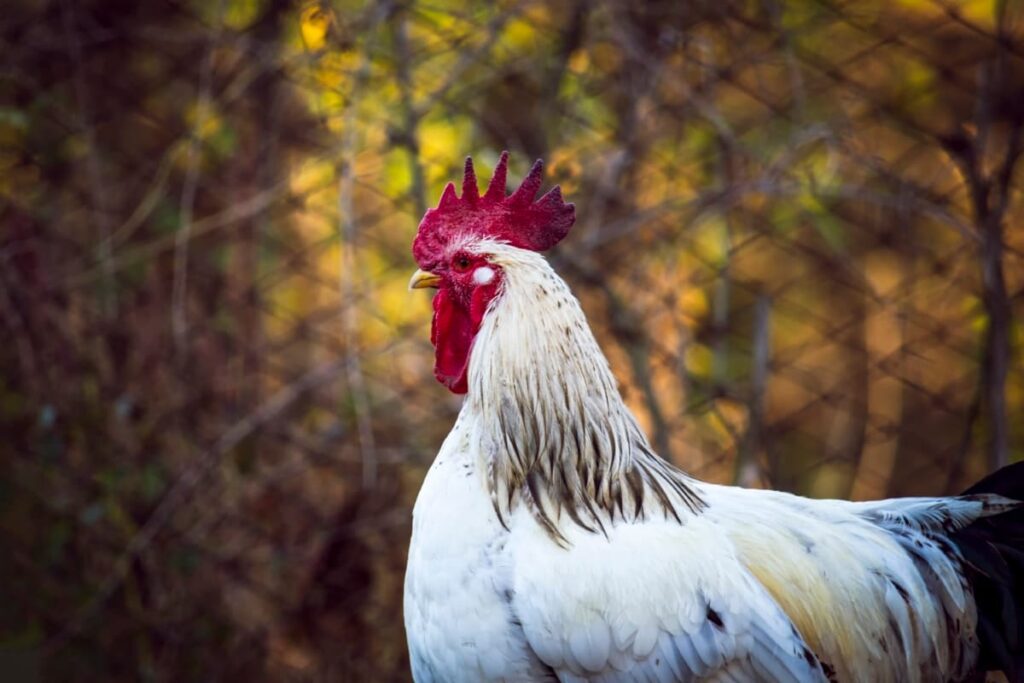Japanese Bantam chickens are a delightful and unique breed known for their small size, striking appearance, and friendly demeanor. Raising these miniature chickens can be a rewarding experience, whether you’re a beginner or an experienced poultry keeper. This guide will walk you through everything you need to know, from selecting your baby chickens to breeding and caring for your flock.

Raising Japanese Bantam
Japanese Bantam Chicken Varieties
- The White Japanese Bantam features pristine plumage, while the Black variety boasts a sleek, alluring appearance.
- The Black Tailed White exhibits a striking contrast with its black tail feathers against a white body.
- Similarly, the Black-Tailed Buff showcases this contrast with buff-colored plumage and black tail feathers.
- Buff Columbian Japanese Bantams display a warm buff hue accented with dark markings.
- Blue Japanese Bantams are enchanted with their soft, bluish-grey feathers, while Tri-color (mille fleur) varieties showcase intricate patterns of white, black, and red.
- Wheaten Japanese Bantams exhibit a warm, wheat-like coloration, while Lavender varieties feature a soft, muted purple plumage.
- Cuckoo Japanese Bantams display a striking pattern of light and dark barred feathers.
- Red, Mottled, Blue Mottled, Splash, and Red Pyle are additional varieties, each adding their unique flair to the diverse world of Japanese Bantam chickens.
The History and Origin of Japanese Bantam
Japanese Bantam chickens, a miniature chicken breed, originated in Japan around the 17th century. Revered for their ornamental value, they were initially kept by Japanese aristocrats for their beauty. Their compact size, unique appearance, and distinctive “U-shaped” tail feathers distinguish them.
Japanese Bantams were introduced to Europe in the 19th century, where they gained popularity as exhibition birds. Their captivating presence and graceful demeanor continue to make them prized among poultry enthusiasts worldwide, embodying centuries of careful breeding and cultural appreciation for aesthetic elegance in avian form.
Unique Characteristics of Japanese Bantam Chickens
- Size: Japanese Bantams are small chickens, typically weighing around 680-740 grams.
- Appearance: They have a distinctive appearance with short legs, a compact body, and a large tail held upright.
- Color Varieties: Japanese Bantams come in various color varieties, including black, white, black-tailed white, black-tailed buff, and more.
- Combs and Wattles: They have unique combs and wattles. Their combs are often dubbed as “strawberry” combs due to their small, berry-like appearance.
- Japanese Bantam Temperament: Japanese Bantams are known for their friendly and docile nature, making them suitable as pets or for exhibition purposes.
- Broodiness: They are good mothers and are known for their tendency to go broody and raise baby chickens.
- Adaptability: Despite their small size, Japanese Bantams are hardy birds and can adapt well to various climates.
Japanese Bantam Chicken Care Essentials: Diet, Housing, and Health Management
Japanese Bantam chickens, known for their diminutive size and ornate plumage, require careful care to thrive. Japanese Bantam diet should consist of high-quality poultry feed supplemented with fresh greens, fruits, and grit for digestion. Ensure clean water is always available. This bantam chicken housing should include a secure coop with ample ventilation, perches, and nesting boxes.
The bedding should be clean, dry, and changed regularly to prevent health issues. Regular health checks are essential. Watch for signs of illness like lethargy, decreased appetite, or abnormal feces. Preventive measures include vaccinations against common poultry diseases and regular parasite control.
In case you missed it: 45 Days Chicken Business Plan: Investment, Cost, Profit for 45-Day Cycle Broilers

Maintain a clean environment to control the spread of disease. Provide opportunities for mental stimulation and exercise to promote overall well-being. Regular grooming, such as checking for mites or trimming feathers around the vent area, helps keep birds comfortable. Lastly, handle them with care to prevent injury due to their small size.
Japanese Bantam Egg Laying: Egg Size, Egg Color, and Egg Price
Japanese Bantam Egg Production: Japanese Bantams are renowned for their small size and charming appearance, but they are not prolific layers. Their eggs are generally small, averaging around 30 grams in weight.
Japanese Bantam Egg Color: The egg color typically ranges from cream to light brown, though there can be slight variations among different strains of Japanese Bantams.
Japanese Bantam Egg Price: Due to their small size and limited egg production, Japanese Bantam eggs are often considered more of a novelty or specialty item rather than a primary source of income for breeders. On average, a single Japanese Bantam egg may cost anywhere from $1-2, reflecting their unique characteristics and the care required to raise these diminutive birds.
Japanese Bantam Size, Weight, Lifespan, and Price
Japanese Bantams are small chickens prized for their ornamental appearance. They typically weigh between 450 to 570 grams and stand around 8 inches (20 centimeters) tall. Japanese Bantam Lifespan averages around 5 to 7 years, but with proper care, they can live up to 10 years.
Prices vary based on factors like color, lineage, and age, ranging from $20 to $50 per bird. These diminutive chickens are popular among hobbyists and backyard enthusiasts for their compact size, striking plumage, and gentle demeanor, making them ideal for small spaces and as pets or exhibition birds.
Breeding Japanese Bantam Chickens
Japanese Bantam Breeding involves selecting healthy, purebred individuals with desirable traits such as feather color, size, and temperament. Pairing compatible birds is crucial to maintaining breed standards and genetic diversity. Provide optimal living conditions with ample space, proper nutrition, and protection from predators. Monitor mating behavior and egg production closely.
Incubate fertilized eggs in a controlled environment, ensuring appropriate temperature and humidity levels. Hatchlings require attentive care, including warmth, clean bedding, and access to water and baby chicken feed. Continuously evaluate offspring for adherence to breed standards, selectively breeding the best specimens to improve the quality of future generations.
Common Health Issues in Japanese Bantam Chickens
Japanese Bantam chickens are prone to various health issues, including Marek’s disease, a viral condition affecting the nervous system, causing paralysis and tumors. They are also susceptible to respiratory illnesses like infectious bronchitis and Newcastle disease. External parasites like mites and lice can infest their feathers and skin, leading to irritation and discomfort.
In case you missed it: Dong Tao Chicken Breed: Origin, History, Appearance, Size, Characteristics, Eggs, Price, and Lifespan

Also, reproductive problems like egg binding may occur, where eggs become stuck inside the hen’s reproductive tract. Proper hygiene, vaccination against common diseases, regular parasite control, and providing a balanced diet can help mitigate these health concerns in Japanese Bantam chickens.
Japanese Bantam Chicken Shows
These diminutive birds showcase a compact body, short legs, and an exquisite array of feather patterns. Exhibitors carefully groom their birds, focusing on their distinctive tail carriage, compact bodies, and striking plumage patterns. Judges assess each bird based on breed standards, looking for ideal size, coloration, and overall balance.
The competitive atmosphere is lively yet respectful, with breed enthusiasts sharing knowledge and admiration for these elegant creatures. Judges evaluate these charming birds based on specific breed standards, including plumage color and overall conformation.
Japanese Bantam vs Other Bantam Breeds
Unlike other Bantam breeds, Japanese Bantam chickens have a distinct appearance resembling a miniature version of traditional Japanese chickens. Their small size and striking plumage make them popular choices for backyard enthusiasts and exhibition poultry breeders alike. While other bantam breeds vary in appearance and temperament, the Japanese Bantam’s distinctive traits set it apart, earning it a special place in the hearts of poultry enthusiasts worldwide.
In case you missed it: Vorwerk Chicken Breed: History, Origin, Characteristics, Price and Egg Production

Conclusion
We hope this chicken farming guide has provided valuable insights for your journey into the world of raising Japanese Bantam chickens. May your flock thrive and bring you endless joy for years to come!
Note: The images presented in this post are intended solely for representation purposes. The images are meant to serve as visual aids and should not be relied upon as accurate representations of their real-life counterparts.
- Profitable Village Farming Business Ideas in 2024
- High-Yield Aquaculture: Fast-Growing Fish for Farming
- Effective Fish Pond Construction Techniques for Beginners
- Irrigation and Water Management in Pineapple Farming
- Blossom to Harvest: Mastering Flowering and Pollination in Papaya Farming
- Pig Fattening Essentials: From Selection to Sale for Beginners
- Raising Wagyu Cattle: A Complete Guide for Premium Beef Production
- Soil Types and Their Water Holding Capacity
- Optimizing Irrigation Schedules for Coconut Groves for Enhanced Yield
